Shrewsbury currently has the accolade of being the only county town in the UK that doesn’t have a direct rail service to London.
Several services have been put on (among them by Virgin Trains and Avanti West Coast), but none of them lasted.
The Wrexham, Shropshire and Midlands Railway could be on the verge of approval for its service to London Euston. Peter Plisner has been talking exclusively to some of those behind the latest plans.
In this article:
- WSMR plans to restore direct rail services from Shrewsbury and Wrexham to London, aiming to fix past route and access issues.
- The new service targets underserved communities, aims for economic growth, and includes plans for new and improved stations.
- Despite DfT support, the proposal faces scrutiny over West Coast Main Line capacity; ORR’s final decision is still pending.

Shrewsbury currently has the accolade of being the only county town in the UK that doesn’t have a direct rail service to London.
Several services have been put on (among them by Virgin Trains and Avanti West Coast), but none of them lasted.
The last open access operator, officially known as the Wrexham, Shropshire & Marylebone Railway, ceased its operation after just three years in service.
In January 2011, the company announced that it would stop running services. In a statement, it said that the decision had been taken after “an investigation into all possible alternatives”.
It blamed an “unprecedented economic environment” and said that although it had tried to increase passenger numbers, “it has been determined that the business has no prospect of reaching profitability”.
So, what makes Wrexham, Shropshire and Midlands Railway (WSMR) now think it can make money where the previous offering didn’t?
The latest open access proposal is a joint venture between global transport group Alstom and rail consultancy SLC. Darren Horley, Mobilisation Director for Open Access Operations at Alstom, says the previous service didn’t fully realise its full potential.
“It got a lot of things right and it had a good following of loyal customers. However, it faced a number of challenges, such as the routeing of the service, the consequential long journey times, and contractual restrictions imposed on it.
“These restraints prevented the company serving key stations in the West Midlands, which consequently prevented the service taking any form of revenue from certain destinations.”
It’s understood that the ‘Moderation of Competition’ rules were to blame. These were put in place to limit competition between private train operators, particularly on routes such as the West Coast Main Line, where a franchised operator held a monopoly.
The rules were designed to protect franchised operators’ revenue from abstraction by other companies seeking to gain access to the same routes.
In the case of Wrexham and Shropshire, it was prevented from stopping (and picking up passengers) at key destinations in the West Midlands, such as Birmingham’s New Street station and Wolverhampton.
Horley maintains that the rules did not just stifle any revenue being created from passengers who were new to rail.
“It also removed choice for the customer. Being able to serve those stations combined with a competitive fares strategy - for example, fares appropriate for the slower journey time - could have attracted new rail growth. And customers switching to an alternate service may have helped ease capacity on some services that were overcrowded at the time.”
Instead, the company had to make do with Tame Bridge Parkway, an outlying station not far from the M6 near Walsall.
That meant a rather tortuous route to and from London Marylebone station taking around three hours from Shrewsbury - far from ideal.
The latest route from Wrexham and Shrewsbury via the West Midlands is radically different from the last operation.
The biggest change is that it will terminate at London’s Euston station, rather than Marylebone.
But there are other differences, too. Once trains get past Wolverhampton, they will stop at a new station at Darlaston (due to open next year), and then at Walsall, Coleshill Parkway and Nuneaton, before heading along the West Coast Main Line to London.
“What we’re doing is bringing back a service that was loved. But we’re going further than this because we’re making it more attractive to new rail customers by introducing new direct connectivity, making it quicker to London and to the North,” says Horley.
WSMR remains tight lipped about its preference for rolling stock for the new service, although its application to the Office of Rail and Road (ORR) states that the rolling stock it deploys “will perform to the same as, or greater than, the characteristics of a Class 222 DMU.” Those trains are better known as either Voyagers or Meridians.
However, it’s also understood that there are spare Class 221s, the tilting Super Voyagers, available. They would be able to tilt round the bends on the West Coast Main Line, allowing them to run at 125mph, the same speed as Avanti West Coast’s Class 390 Pendolinos. That would help to maximise capacity on the route.
Ironically, the trains were built by Bombardier, which Alstom now owns. It also still maintains the trains at its Central Rivers depot near Burton upon Trent.

But having a close association with the trains won’t help the company secure them. The same trains and the standard non-tilting Class 222s are being sought by a large majority of other companies currently seeking Open Access rights, and there aren’t enough trains to go round. In its application, WSMR has also committed to commissioning a feasibility study into the “viability of developing the Class 22x units to enable hybrid operation working on 25kV overhead lines where available and only operating on diesel where absolutely necessary”.
It goes on to say that a further study would look into “options to fit battery technology to the Class 22x units for short distances and to eliminate the need to run engines in stations or other places where noise and diesel emissions are of particular concern”.
So, why is a company known in the UK for manufacturing rolling stock getting involved in operating the trains?
Well, Alstom already runs trains in other parts of the world. The company is the largest private rail operator in North America. It has been running trains for over 40 years and has more than 50 separate operations across the globe.
Alstom’s original intention was to bid for the new concessions that were expected to be let following the publication of the Williams-Shapps Plan for Rail in May 2021.
But those concessions never materialised. And following last summer’s election of the Labour government, the plans have changed with renationalisation the favoured option. That has left very little scope for private sector involvement in the running of the trains.
One area remains, though - and that’s Open Access. And even following recent comments from Transport Secretary Heidi Alexander, the company is still keen on the concept.
Alexander has made it clear that future open access operations will have to adhere to strict criteria before they receive approval - including minimal abstraction levels from existing taxpayer-funded services, and trains that must, where possible, not increase congestion on the network.
When it comes to abstraction and additional competition, WSMR maintains that it will “complement” government-run renationalised services, rather than directly compete with them, and the route chosen by WSMR is designed to do exactly that.
Horley explains: “WSMR surpasses the strict abstraction criteria, which is there to ensure that any new operator does not over-abstract revenue from existing services.
“I believe this is fair, in that any new proposition should generate new-to-rail revenue which makes the criteria appropriate.
“However, there needs to be a sensible and supported mechanism to calculate new revenue that current industry models seem to overlook, such as service quality, economic growth factors, and abstraction from road and air.
“I believe this is why we’ve received support from Heidi Alexander and such an enormous positive response from stakeholders and MPs along the route.
“I firmly believe customers should have choice and a quality service the regions are proud of. All this while serving and linking new destinations - hence we’re here to complement Department for Transport services, not directly compete with them.”
Also, after Avanti West Coast withdrew its Shrewsbury-London service last year, there isn’t a service to compete with.
“Unlike some of the bigger companies like Avanti, WSMR is a small operation, so it’s economically more viable for all our traincrew to learn and retain the route in their individual competency requirements,” says Horley.
Another important factor is the locations served by WSMR. The route has been carefully threaded through several communities that don’t have direct services to London.
Horley admits that it’s not just about finding good markets: “It’s actually about looking at those markets and conurbations that are really underserved, have slower growing economies, and would consequently benefit from increased connectivity to improve its economic prosperity, giving greater access to employment and education opportunities.”
Walsall is one of those areas. It’s not viewed as being as affluent as somewhere such as Shrewsbury. But the new WSMR service could potentially give people access to education, health and jobs.
Walsall is also the centre of the UK’s leather industry, and as such is also a potential tourist attraction that could be promoted.
And further north, Wrexham is becoming much more high-profile since American actor Rob McElhenney and Canadian actor Ryan Reynolds purchased the city’s football club in 2020.
Since the take-over there has been much publicity from a TV docu-series, Welcome to Wrexham. This has had a significant impact on the club’s visibility, leading to it acquiring a new global fanbase for a team that was then in the fifth tier of the English football pyramid, but which has just been promoted to the Championship (the second tier).
WSMR wants to capitalise on the club’s new-found fame.
Says Horley: “When you speak to the club’s CEO, he’s got big ambitions to put Wrexham in the Premier League, which is fantastic. That’s going to continue to generate a lot of fans traveling to Wrexham.”
Horley says he went to see officials at the club as part of stakeholder engagement, and was surprised at how many people were turning up at the ground.
“I sat in their boardroom, and in the space of about an hour there must have been about seven or eight taxis pulling up in the car park. People were getting out, taking pictures, and then getting back in.
“Upon leaving the meeting, I made a point of speaking to some of those people. I was astonished to learn that many of them were from overseas - it was clear they were landing at either Heathrow or Gatwick and immediately taking taxis from there to Wrexham, to see the town and football ground.
“What we need to do is attract these travellers to rail and promote the fantastic destinations on our route that they are missing out on, such as the Ironbridge Gorge and Shrewsbury.”
As well as making the most of the tourist potential in each location its trains will serve, WSMR also hopes to improve the station offering in some places.
It has stated that ultimately it wants to take over the running of certain stations on the route. It also wants to improve the offering at Coleshill Parkway - a little-known station in north Warwickshire which sits on the line from Birmingham to Peterborough, and which is one of a rare number of stations run by a train operating company that doesn’t actually stop its trains there.
West Midlands Trains runs it, but only CrossCountry calls there. That will change when WSMR begins its operation, giving the station a direct connection to London.
Horley says: “Coleshill the station is not entirely visible. It’s on a business park. But if you look at its actual situation close to the motorway, it’s very well connected, hence the name ‘Parkway’.
“For me, it’s all about being close to and understanding the passenger, and having the touch points - not just with the passenger when they first book their ticket, but the touch point in the car park and with the customer on the platform.
“So, when things go wrong, which inevitably they will do, we at least would have a member of our staff dealing with our customers. Having a strong visible presence by staff on a station is completely new to the open access market.”
Something else that’s different is WSMR’s plan to build a new station in the Shrewsbury area.
So far, no other open access operator has built a new station as part of its operation. But WSMR is already working closely with Shropshire Council on exploring the concept of a Parkway station which would serve not only Shropshire, but also north Wales.
And plans for the new station is where SLC, the other part of the WSMR joint venture, comes in. The company specialises in delivering new stations to the rail network, and has already been involved with the hugely successful Worcestershire Parkway station and the recent construction of stations on the Northumberland line.
SLC Managing Director Ian Walters was previously Financial Director at the highly innovative Chiltern Railways.
“We are pleased to be working with Shropshire Council to look into more detail at the case for a Parkway station close to Shrewsbury,” he says.
“We’re going beyond the normal Strategic Outline Business Case. We’re actually working out what it would take to design, develop, construct and own that station as part of the WSMR operation.
“We’re working with Shropshire primarily, but there has to be a good relationship between the various stakeholders interested in having it constructed.
“It will be a local economic stimulant, so we’re trying to work out what the scale of the change that we’ll bring in locally and economically will look like. That’s what Shropshire Council is interested in.”
Then there are benefits in terms of relieving the pressure on Shrewsbury station and the congestion on the surrounding roads
Walters explains: “We are looking at it from a revenue, demand, and operation investment case. We’re trying to bring the private and public sectors together, so that we can ultimately take on the delivery of it through the WSMR operation.”
Aligning the station proposals with WSMR’s plans to operate passenger rail services potentially shows how an open access rail company can attract much-needed private sector investment in railway infrastructure, and create jobs and support housing growth in the UK.
Although the WSMR service has yet to receive the go-ahead from the ORR (as this isue of RAIL went to press), it’s the only one to receive backing from the Department for Transport.
But in its letter to ORR in February this year, the DfT stated that there were still concerns about the impact the new service could have on the West Coast Main Line into Euston station, which it said was “already constrained, and maintaining performance is often challenging”.
And according to Network Rail, that remains a sticking point. It has stated in various pieces of correspondence that it has concerns about capacity issues on the West Coast route south of Rugby, and that additional services could only make that situation worse.
However, WSMR maintains that there is unused capacity on the West Coast South route.
With continued delays of the WSMR application, a cross-party group of MPs serving the communities that stand to benefit wrote to Network Rail Chief Executive Sir Andrew Haines, asking for a “positive response” to ORR’s consultation.
The MPs made it clear that they understood there is complexity in the allocation of paths into Euston, with a number of open access requests. But they wrote: “There is considerable regional and political support for this service, which was unduly cut at the end of the pandemic.”
They suggested that passengers were under-served by the lack of a direct service to London, and are instead reliant on connecting services that do not serve neighbouring communities effectively and which are “often beset by delays, complications and cancellations”.
They also stated: “This latent demand is crying out for services to fulfil our true potential as economically thriving places to work, visit and live.”
They’re now calling on Network Rail to find the capacity for the proposed service as a matter of urgency.
With a carefully planned route to maximise potential patronage and revenue, plans for a possible new station and a new customer-focused approach, innovation appears to be a key part of the latest plans to link Wrexham, Shrewsbury and London.
Despite receiving DfT backing, the final decision rests with the ORR as the independent regulator.
It’s understood that the various consultations on capacity appear to be drawing to a close, which means that those behind the bid shouldn’t have to wait to long for a final decision.
WSMR remains hopeful that it can start running its first trains later this year.
For a full version of this article with more images, Subscribe today and never miss an issue of RAIL. With a Print + Digital subscription, you’ll get each issue delivered to your door for FREE (UK only). Plus, enjoy an exclusive monthly e-newsletter from the Editor, rewards, discounts and prizes, AND full access to the latest and previous issues via the app.
Login to continue reading
Or register with RAIL to keep up-to-date with the latest news, insight and opinion.

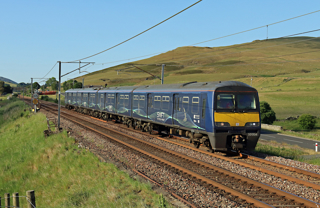
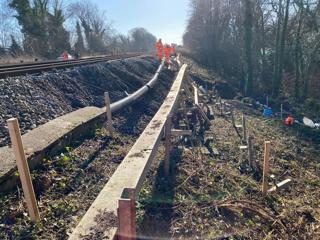
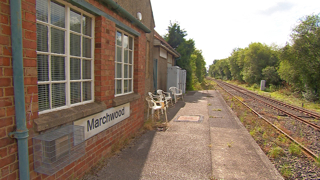
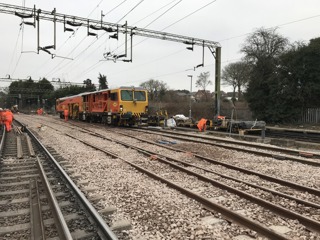
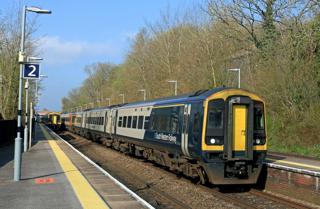

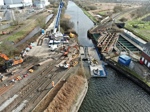










Login to comment
Comments
No comments have been made yet.